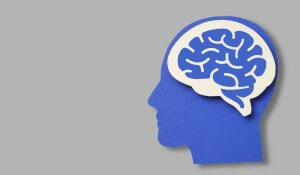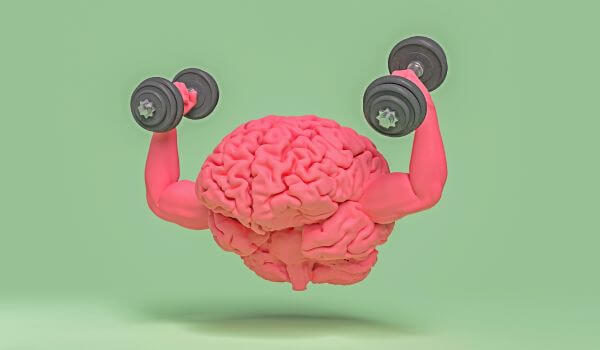Frailty and dementia are often spoken about as two separate parts of aging, but new research suggests they may be more tightly connected than most people realize.
The natural process of aging brings with it slow but life-changing disturbances to people’s bodies and minds. The steady extension of life expectancy in advanced societies has increased awareness that older people can slip into a phase where cognitive functions decline while their bodies remain relatively healthy, in a slide toward the condition known as dementia. For most people of advanced years, there will be inescapable signs of frailty, characterized by weakening in their muscles, bones, and senses. Some people may feel that their brain has escaped much of this change, but now new research suggests frailty may do more than predict dementia, it could help cause it. People facing the gradual loss of physical and mental strength should learn how physical frailty affects brain health and what early prevention may look like. The importance of proper care cannot be over-emphasized. Dementia currently affects 57 million people worldwide and is projected to swell to over 150 million by 2050.
This article explores how physical changes in the body may affect brain health, how early signs of weakness connect with memory loss, and why prevention should start sooner than many expect. The goal is to help readers understand the growing evidence behind this connection and to highlight gentle, practical steps for supporting healthy aging.
A surprising connection between body and brain

What do we mean by “Frailty”?
Frailty is best understood as a mix of lower strength, reduced energy, and slower recovery from stress or illness. It often becomes noticeable through everyday changes. These signs include:
- Unplanned weight loss
- Feeling tired or running out of energy more quickly
- Walking more slowly than usual
- Doing less physical activity
- Having a weaker grip than before
Even “prefrailty,” where a person has only one or two of these signs, raises the risk of cognitive decline by about 50%. This makes frailty one of the most important early signals of future brain health concerns.
The study: Evidence for a causal link
The scientific journal Medscape reported on the UK Biobank study that followed 489,000 adults with an average age of 57 over a period of 13 years. The findings were striking:
- People who were physically frail were nearly three times more likely to develop dementia.
- Each additional sign of frailty increased the chance of dementia even more.
- Genetic analysis, known as Mendelian randomization, suggested frailty may help cause dementia, not just predict it.
This evidence supports the idea that frailty is more than a surface-level change. It may reflect deeper issues inside the body that also influence how the brain ages.
The role of genetics and inflammation
Genetic factors such as the APOE-e4 mutation can raise a person’s dementia risk, but frailty appears to work alongside genes rather than being separate from them. Inflammation, oxidative stress, and changes in metabolic function act as silent drivers behind both physical frailty and brain decline. These processes may speed up aging in both muscles and neurons at the same time.
Regular checkups that track cholesterol, blood sugar, and inflammation markers can help identify concerns early. These risk factors affect both the body and the brain, often in ways that people cannot feel until symptoms appear.
How frailty might lead to dementia
Frailty and dementia share many biological pathways. Over time, frailty may push the brain toward earlier decline through:
- Brain shrinkage, especially in the frontal and parietal regions
- Problems with energy use in cells
- Imbalances in immune system activity
- Changes in blood sugar and cholesterol
- Higher vulnerability in those with the APOE-e4 gene
These processes work together to create a cycle where weakness in the body echoes weakness in the brain. This connection explains why frailty appears years before dementia symptoms become clear.
How to spot and address frailty
Some early signs include unplanned weight loss, weaker grip strength, slower or stumbling walking, lower endurance, tiredness, and avoidance of routine activities.
These signs may look small, but research shows that spotting them early matters. They reflect deeper biological changes, not just aging on the surface.
What early prevention can do
Prevention starts with consistent care. At IsraelPharm, we have been glad to be able to help thousands of customers facing the risk of dementia manage this condition through accessible and affordable medications. We strive to provide patients with long-term treatments for dementia, as well as other chronic conditions that come with aging, such as menopause, osteoporosis, and prostate cancer.
Experts emphasize the value of acting early. As the Medscape article quotes, Dr. Shaheen Lakhan says, “If frailty drives dementia through immune and brain pathways, preventing dementia becomes synonymous with slowing biological aging itself.” Supporting the body early may give the brain a better chance to stay sharp for longer.
What a person can do to protect brain health
- Regular physical activity helps maintain strength and supports brain function.
- Mediterranean-style or anti-inflammatory eating patterns support dementia prevention.
- Simple supplements can directly address some of the changes that come with the passage of years. Our over-the-counter products Longevity Pack and NAD+ are speciafically designed to ease the path towards healthy aging.
- Checking metabolic health helps reduce silent risks like inflammation.
- Managing chronic concerns such as high blood pressure or diabetes protects neurological aging.
Take-away thoughts: Frailty may be a “warning signal” about brain health
Caring for the brain means taking care of the body. Simple habits like exercise, balanced diet, and consistent treatment can help preserve both strength and memory.
Research shows:
- Physical strength and brain health are deeply connected.
- Frailty is modifiable and can improve with the right support.
- While dementia has no cure, slowing decline is possible.
- There is always hope in early, steady steps.
What we need to understand: the weaker the body, the higher the risk the brain will follow.
What we need to learn: the earlier the intervention, the greater the potential for slowing the declines.
Frequently asked questions about frailty and dementia
Is frailty always a sign of dementia starting?
Frailty does not always mean dementia is on the way, but it does raise the chances. Studies show that people who are prefrail or frail are more likely to develop cognitive problems later in life. This is because frailty and dementia share similar biological pathways, such as inflammation and slower energy use in the body. Frailty gives an early hint that these pathways may already be shifting. Catching frailty early helps people and clinicians pay closer attention to brain health.
Can strengthening the body really lower dementia risk?
Research suggests that improving strength and activity levels can help reduce the chance of dementia. Activities like walking, balance work, and light strength exercises support both muscles and brain cells. They help reduce inflammation, improve blood flow, and support neuron function. While exercise cannot guarantee prevention, it is considered one of the most helpful ways to support healthier aging. Even small improvements in muscle strength or activity can create meaningful benefits.
How does inflammation connect frailty and dementia?
Inflammation acts as a hidden link between the body and the brain. As people age, low-level inflammation – sometimes called “inflammaging” – can affect muscles, blood vessels, and neurons at the same time. This process weakens muscles, which contributes to frailty, and also affects the brain’s ability to stay healthy. Over time, inflammation can damage brain cells and reduce blood flow, increasing dementia risk. Addressing inflammation early helps protect both physical strength and cognitive function.
Are genetics like APOE-e4 more important than frailty?
The APOE-e4 gene is a strong risk factor for dementia, but frailty has been shown to increase risk even in people without this gene. In fact, frailty can interact with genetic risk, making symptoms appear sooner or progress faster. This means frailty is important for everyone, regardless of genetic background. While genes cannot be changed, frailty often can, which gives people a meaningful area to focus on when thinking about prevention.
Can frailty be reversed or slowed down?
Yes, frailty is considered a modifiable condition, and early steps can help slow or even reverse some signs. Improving nutrition, increasing safe movement, managing chronic conditions, and staying socially connected all support healthier aging. These changes help improve energy use, reduce inflammation, and strengthen muscles. Addressing frailty early improves day-to-day life and may also help delay cognitive decline. Small, steady improvements matter and can make a real difference over time.















